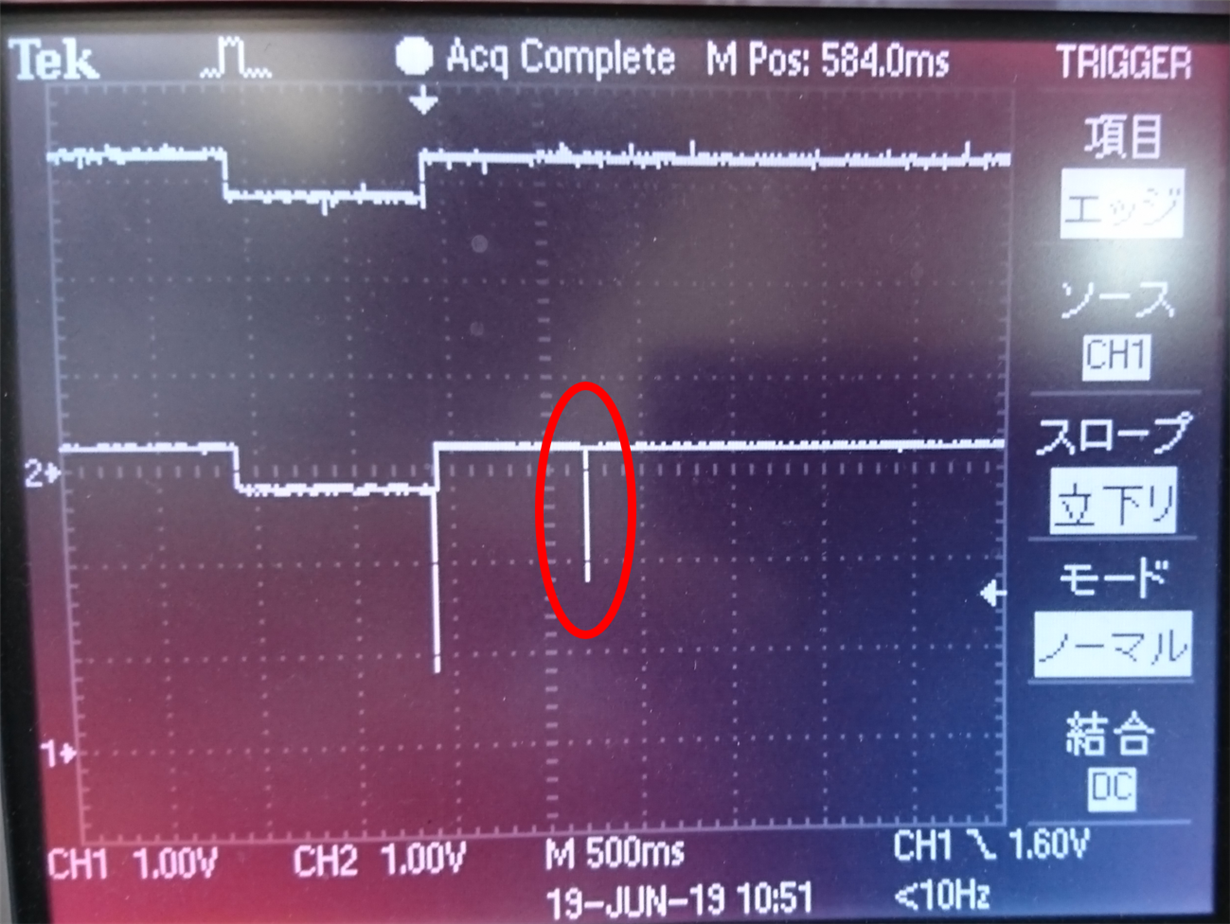Other Parts Discussed in Thread: DRV5032, , DRV5021
Dear all,
Our customer would like to know the cause of following phenomenon.
When the power supply voltage is changed from 2.8V to 3.3V in the DRV5033DU, The voltage of OUT terminal (No.2 pin) falls for a moment like figure below.
(upper signal:power supply voltage Lower signal:voltage of OUT terminal)
Could you tell me the possible cause?
※Our customer says that This phenomenon does not occur with DRV5032FC.
It would be great if you could let me know your thoughts on the following questions.
Best regards,
Y. Ottey



